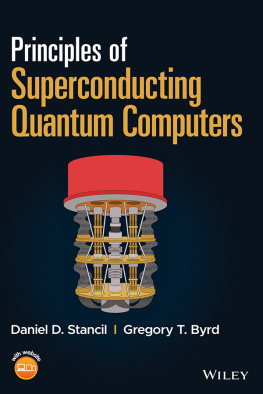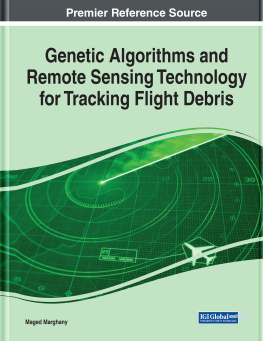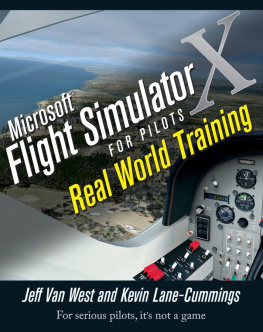Physics of Flight
An Introduction
Copyright January 2016 , Dr. R. Andrew Motes,
AM Photonics
Rio Rancho, NM 87144
USA
www.amphotonics.com
All rights reserved. No part of this book may be reproduced or transmitted in any form or by any means, electronic or mechanical, including e-mailing, printing, or photocopying without permission in writing from the author.
Prologue
To fully understand the math in this book you should have a basic understanding of trigonometry, geometry, physics, matrix math, and pre-calculus. This book is a condensed version of a complete textbook on flight dynamics/physics which normally costs at least ten times what you pay for this book. Ive condensed the information by eliminating the lengthy, boring derivations. Ive also made my computer code available to yousomething those expensive textbooks do not do.
Ive written it with first person, active voice, and contractions. I hope you enjoy this new modern style for writing technical books.
Introduction
In 2001, I was Chief Engineer for the Chop Shop on Kirtland Air Force Base in Albuquerque, New Mexico, USA. That units mission was to determine how difficult it was to counter U.S. weapon systems; but in 2001 our mission was to determine how difficult it would be for terrorists to purchase an airplane, retrofit it with an autonomous control system, and then use it to deliver explosives to targets inside the USA. As part of this effort, I designed an aircraft computer model to represent a Titan Tornado aircraft so that we could control it with an inexpensive, commercial, autonomous aircraft control system; it was less expensive than flying the hardware. On 11 September of that same year, terrorists flew airplanes into the World Trade Center towers, showing us that our mission parameters were wrong; no autonomously-controlled aircraft was necessary; terrorists simply hijacked commercial aircraft and flew them into the targets. We canceled the mission immediately. This book essentially describes the aircraft model I created for that project.
Why would anyone want or need an aircraft flight simulator? Its much less expensive to build software for testing than to build prototype aircraft for testing. Aircraft designers often use aircraft simulators to predict the performance of aircraft before theyre built. With a simulator, you can vary design parameters and observe their effects on aircraft performance; and, you can do this in one day without rebuilding hardware, retrofitting the aircraft, and test flying the aircraft. So, it also saves time in the design and testing phase. Finally, you can use simulators to train pilots to fly the aircraft, even before the aircraft is built. Of course, some people just enjoy flying simulators because its safer than the real thing.
Northrop Grumman Corporation used this method to build the B2 Stealth Bomberthe simulator was built before the aircraft. It was not an expensive simulator, just two chairs with aircraft controls and two computer screens, but it accurately represented the performance of the proposed aircraft. In 2006 I was invited to fly this simulator at the Northrop facility in Los Angeles, CA, USA.
In a sense, this book is an introduction to aircraft flight dynamics; but in another sense, its a description of how to model aircraft with physics and mathematics. Regardless, after reading this book you should understand the physics, and have enough knowledge to write your own software for a basic flight simulator. I also make my Visual C# flight simulator code available to readers.
Ive been writing this series of low-cost, introductory technical books because I see a fundamental problem in technical education, especially in the USA. People are basically lazy and see technology as too difficult to bother learning. Teachers and authors dont help the issue because they make it look and sound difficult. They spend too much time on derivations and theory when they should first describe the basic principles using human experiences and intuition. I prefer to inspect the forest before I inspect the trees. I allow students to see the problem from an elevated level first, so they can learn the concepts; then they can study the derivations if they desire a deeper understanding.
In this book I first give you the four basic principles you need to know to understand how aircraft fly. These are:
To lift an object from the ground, you must lift with greater force than that due to gravity on that object. For aircraft we phrase the principle like this: The force of lift in the upward direction must be greater than the force of gravity on the aircraft in the downward direction. How simple is that?
To drag an object across the ground with constant speed, you must pull with a force equal to the force of friction trying to keep the object from moving. For aircraft we phrase the principle like this: Thrust must be equal to drag (resisting force due to air friction) if we are to maintain constant aircraft velocity.
To drag an object across the ground with increasing speed, you must pull with more force than the force of friction trying to keep the object from moving. For aircraft we phrase the principle like this: Thrust must be greater than drag if we are to have aircraft acceleration.
If an object is rigidly attached at Point A but can rotate about that point, you must push on the object at Point B, behind Point A, so the object points toward you. For aircraft, we phase this principle like this: The center of gravity for the aircraft must be forward of the center of aerodynamic pressure for stable flight. Further explanation: The aircraft always rotates about the center of gravity, but the wind pushes on it through the center of aerodynamic pressure. If the center of pressure is behind the center of gravity, the aircraft will fly forward. If this gets reversed, the aircraft will attempt to fly in reverse! Therefore, horizontal and vertical stabilizers are at the rear of an aircraft, and fins are at the rear of a missile so they will fly forward. This principle has been known for thousands of years, and is why arrows have feathers on the back.
Thats it; Ive described the forest from a distance. You now know all that non-technical people really need to know about how aircraft fly; and youve built a foundation for understanding the remainder of this book. If I hadnt already known these basic principles before I took my first class in aircraft flight dynamics, Im not sure I would have passed it.
Aerodynamic Lift and Bernoullis Principle
Before I describe the detailed physics for flight, I must first help you understand, intuitively, the physical effect that produces aerodynamic lift. In 1738 Daniel Bernoulli discovered that air pressure decreases as air speed increases; therefore, if you can make air go over an object with greater speed than it goes under an object, there will be lower pressure on top than on the bottom. The existence of higher pressure on the bottom of an object than on top will push the object up. If the pressure differential creates a force greater than that of gravity, the object will lift from the ground. This is a basic concept that you need to understand first before you can understand flight physics.
It has long been known that a surface like the one I show in the next image produces lift when moved through air in the horizontal direction and to the left as shown. The bottom side allows air to flow past without curving while the top side requires that the air curve upward and then back down. The air path on top of the structure is longer, requiring that the air move faster before recombining at the trailing edge. Because air travels faster on the top side, its pressure is lower, producing upward lift.












